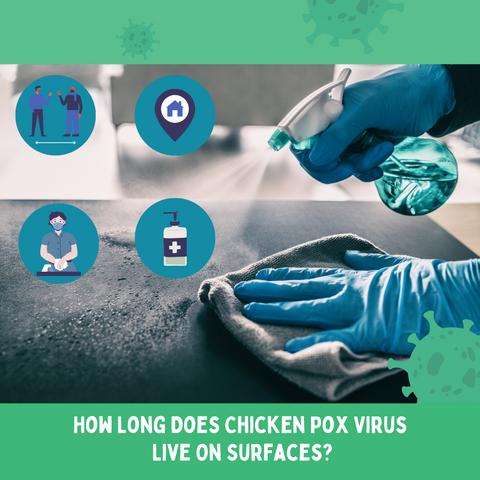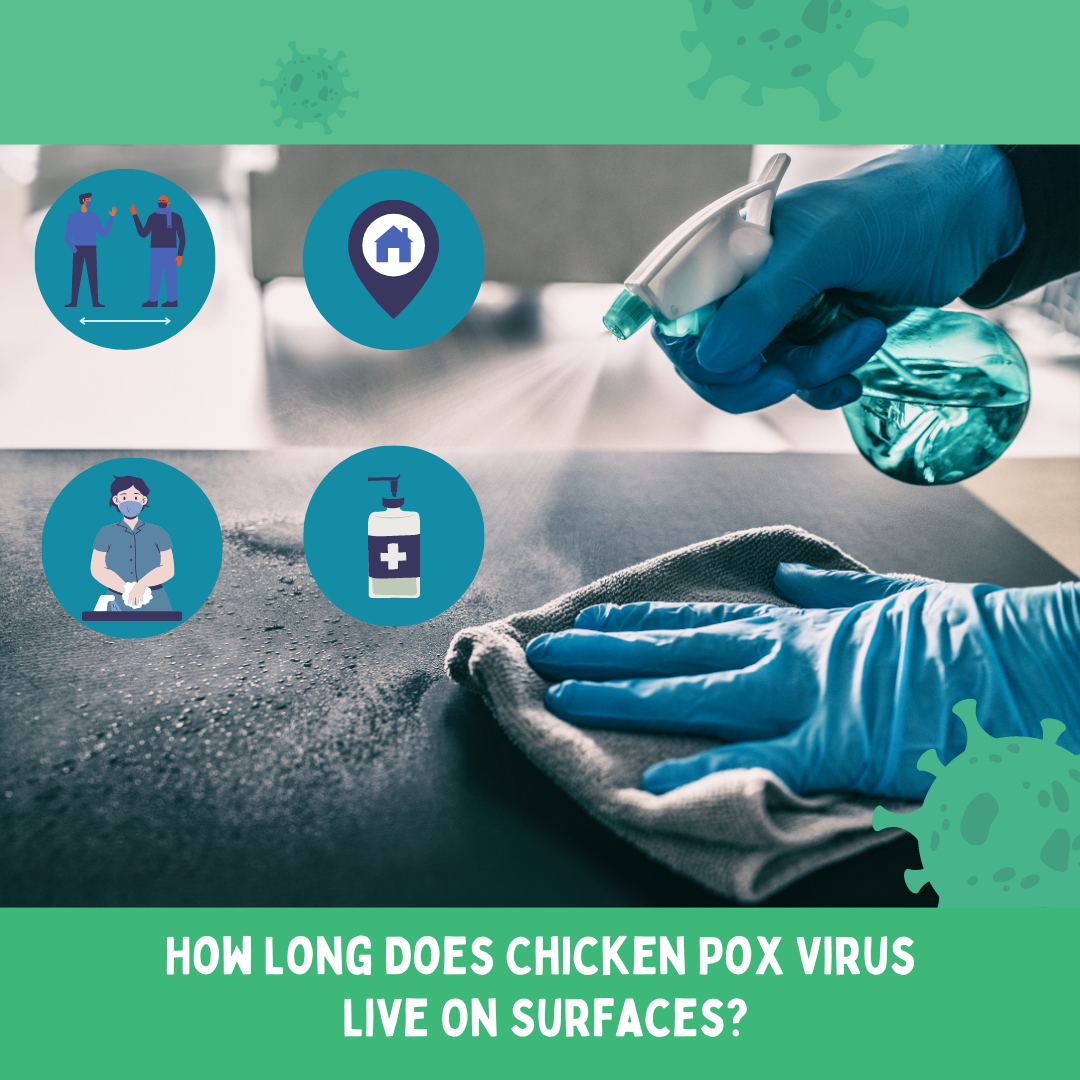Chickenpox, a common yet highly contagious infection, can turn your life upside down in a matter of days.
The constant itching, the discomfort of the rash, and the worry of spreading it to others can make anyone feel helpless and frustrated.
And while it's known that the virus doesn't live long on surfaces, the fear of contaminating your home environment can add to the stress. 
But what if there was a way to navigate this challenging period more smoothly?
Imagine being able to understand the virus better, knowing exactly how long it survives on surfaces, and how to effectively disinfect your surroundings.
Picture a future where you're no longer constantly worried about every object you or your loved ones touch.
This article aims to provide just that - a comprehensive guide on how long the chickenpox virus lives on surfaces, how to disinfect your environment after exposure, and other essential information to help you manage this condition effectively.
For more detailed information on precautions to take during a chickenpox outbreak, you can refer to this essential guide.
Let's turn that stressful situation into a manageable one, armed with knowledge and practical solutions.
How Long Does It Live?
The chickenpox virus does not live long on surfaces. The virus is not known to survive on inanimate objects. However, it can survive in the air for several hours, making it possible to contract the virus by being in a room with an infected person or in a room where someone with chickenpox has been recently.
This airborne transmission is one of the primary ways the virus spreads.
The virus is also contained in the millions of tiny droplets that come out of the nose and mouth when an infected person coughs or sneezes.
This can contaminate surfaces or objects, but the virus does not survive long in these conditions.
It's important to note that a person with chickenpox is considered contagious beginning 1 to 2 days before the onset of the rash until all the chickenpox lesions have crusted or scabbed.
It normally takes about 14 days for the symptoms of chickenpox to show after you have come into contact with the virus.
Some Preventive Measures
- Get vaccinated with the varicella-zoster vaccine.
- Avoiding close contact with individuals who have chickenpox, especially for those who have never had the infection or have not been vaccinated.
- Practising good hygiene habits like regular hand washing, especially after being in public places or around someone with chickenpox.
- Keeping newborns and individuals with a weak immune system away from people with chickenpox.
- Stay at home until all of your blisters have dried and crusted over if you already have chickenpox. If you're unsure about when your child can return to school, this guide can help.
- Consult your doctor for advice if you are not eligible to receive the chickenpox vaccine.
Potential Complications of Chickenpox
While chickenpox is usually a mild disease, especially in children, it can sometimes lead to serious complications.
These can include bacterial infections of the skin, pneumonia, inflammation of the brain (encephalitis), and a rare disease called Reye's syndrome.
It's also worth noting that once a person has had chickenpox, the virus remains dormant in their body and can reactivate later in life, causing a disease called shingles.
Shingles is characterised by a painful rash and is more common in older adults and people with weakened immune systems.
In Summary
Navigating through a chickenpox infection can be a challenging time, filled with discomfort and worry. However, understanding the nature of the virus, including its lifespan on surfaces and effective disinfection methods, can significantly alleviate these concerns.
Remember, the chickenpox virus does not survive long on surfaces, and regular household disinfectants can be used to clean areas that may have been exposed.
If you're unsure about whether you can go to work if your child has chickenpox, this article can provide some guidance.
Symptoms typically appear about 14 days after exposure, starting with a fever and progressing to an itchy rash.
Despite the difficulties, armed with the right knowledge and practical solutions, managing chickenpox can become a more manageable task.
Always remember, vaccination remains the most effective way to prevent this infection. Stay informed, stay safe, and turn a stressful situation into a manageable one.
FAQs:
How to disinfect surfaces after exposure to chickenpox?
While the chickenpox virus does not live long on surfaces, it is still advisable to clean and disinfect surfaces and objects that an infected person may have touched or coughed on. Regular household disinfectants can be used for this purpose.
How long does it take for chickenpox symptoms to appear after exposure?
After exposure to the chickenpox virus, it typically takes about 14 days for symptoms to appear. This period can vary and symptoms can appear anytime between 10 and 21 days after exposure.
What are the symptoms of chickenpox?
Chickenpox symptoms start with a fever, aches, and pains. Within 1 or 2 days, a rash appears. The rash is usually itchy and can make the person uncomfortable. It appears on the scalp and face, spreading quickly down the body and onto the arms and legs. The spots start as flat pink spots that turn into small water blisters. New spots will form even after others turn into blisters. Some people only get a few blisters, but others can have as many as 500. Blisters open, dry up, and form scabs in 4 or 5 days.
Remember, the best way to protect against chickenpox is through vaccination. If you or your child has not been vaccinated and comes into contact with chickenpox, seek medical advice immediately.





Share:
7 Essential Chicken Pox Precautions Every Family Should Know
What Are The Odds Of Getting Chicken Pox Twice?